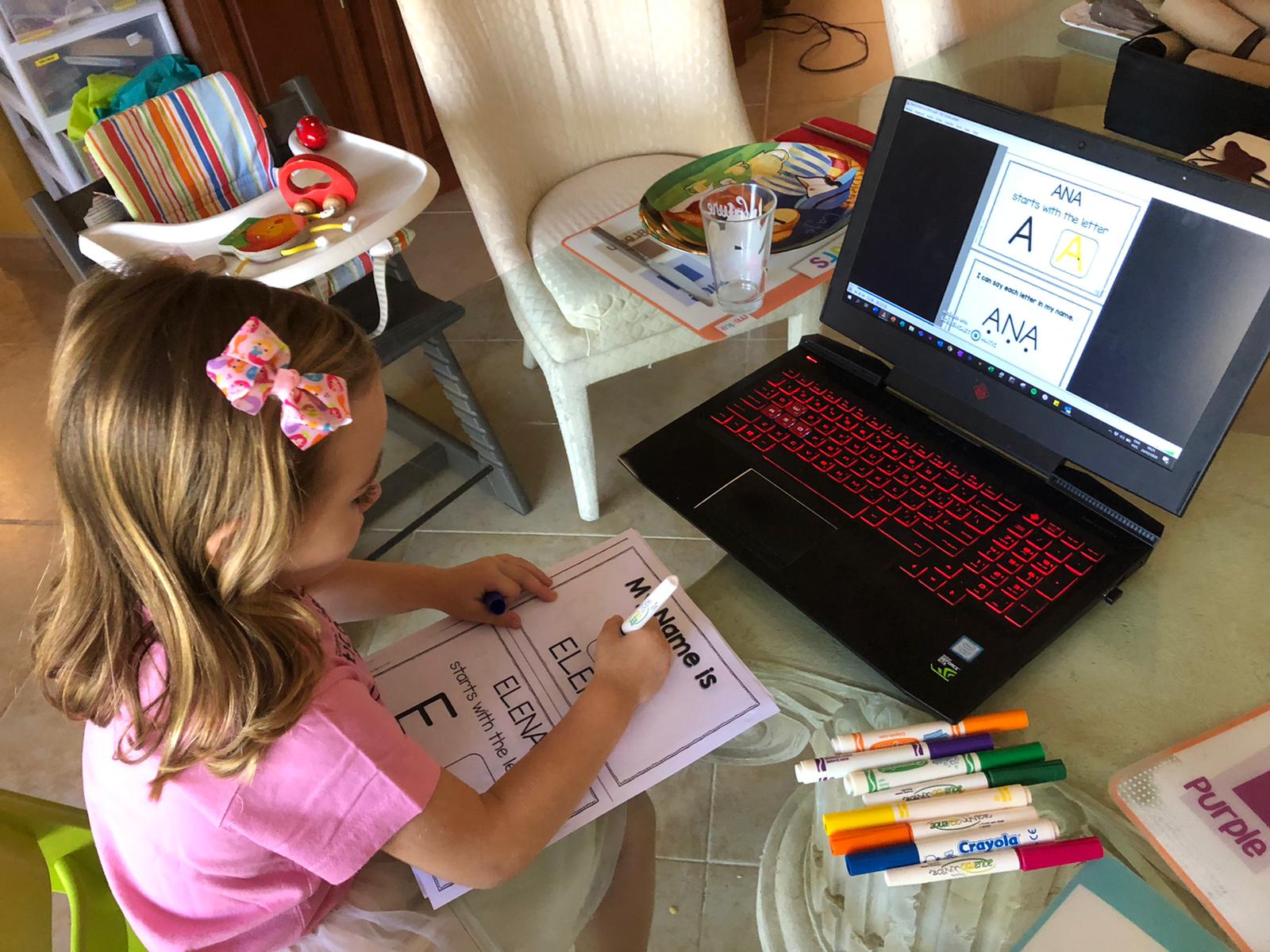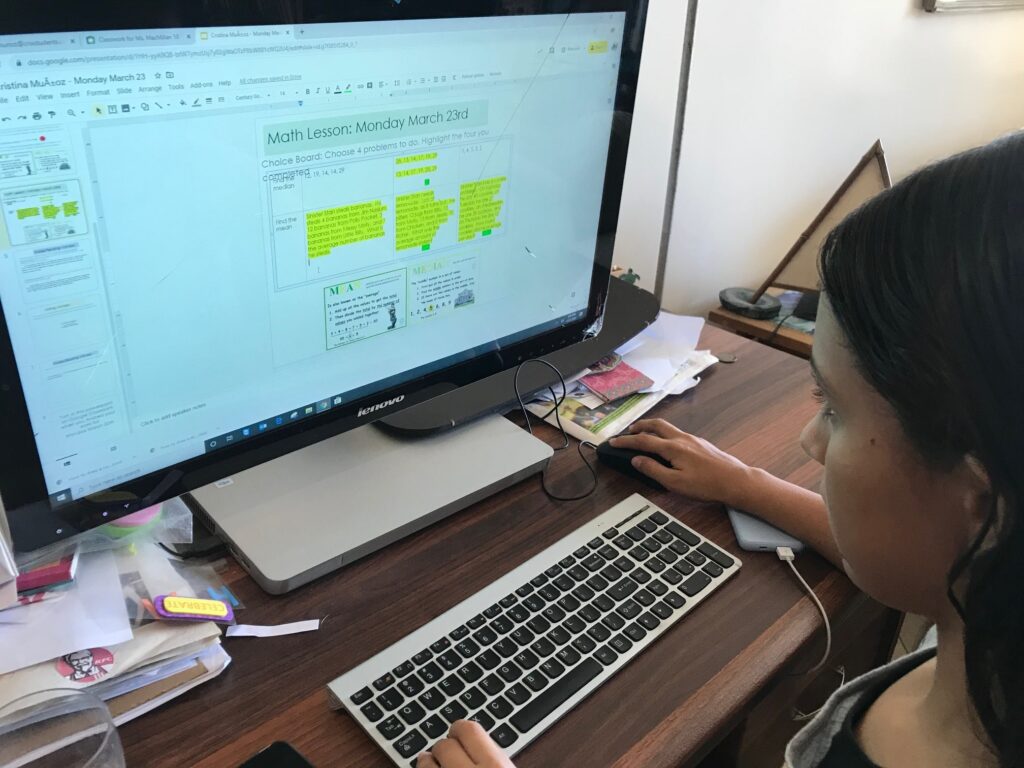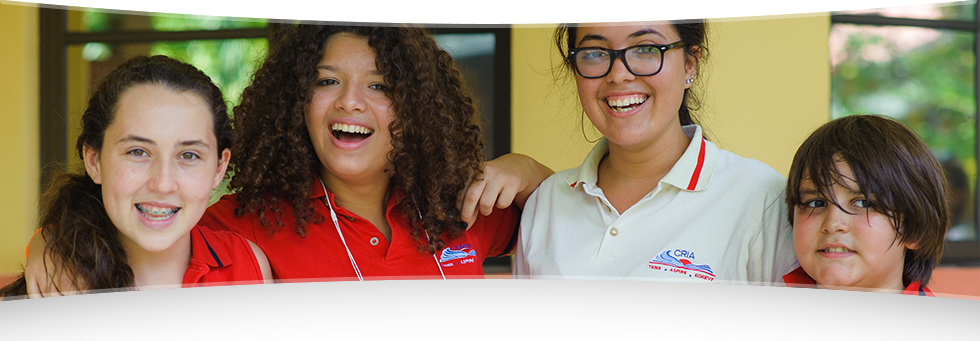
Special education in Costa Rica is more than a checklist: It’s a fundamental element of a well-balanced and diverse international school.
At Costa Rica International Academy (CRIA), our incredible student body is impressive, in part, due to our diversity: One-third Costa Rican, one-third U.S., and one-third from 22 other countries – in total, students from 24 nationalities and teachers hailing from 8 countries.
Here’s another fundamental element in our equation for incredibility: CRIA’s demographic diversity brings to the table not only valuable and diverse perspectives, but also a diversity of learning exceptionalities: Some CRIA students are of high ability, some come to us with minimal English (ELL) or Spanish skills, and still others have learning disabilities/exceptionalities that require a learning support program (LSP) and Individualized Education Plan (IEP).
That’s where we come in.
The best international school programs, including at CRIA, value diversity of perspectives above all, with particular importance placed on the inclusion of a wide range of special needs/exceptionalities within the mainstream program.
CRIA: Including Students with Diverse Capabilities
Inclusion, as an educational concept in K-12 schools, dates back to at least the late 1960s to mid-70s, when U.S. laws passed to include English Language Learners (ELL) and students with disabilities within mainstream education.
Fast-forward through a few decades, and inclusion is now in the very DNA of the best international schools in Costa Rica. Including CRIA.
It begins with an active commitment to the Golden Rule: We believe in treating others the way we would like to be treated. We value compassion, kindness, and a sense of belonging. And in this way, we focus on academic and social inclusion for each individual student.
That means we look at all individuals, across the board. Inclusion, for CRIA, means all students. Inclusion is challenging but valued, and the only way to do it effectively is to hire expertly trained and qualified faculty, as well as a Guidance Counselor, ELL, Learning Support, and Counseling Specialists. At CRIA, special education in Costa Rica comes down to three core programs:
Learning Differences
At CRIA, we work with our individuals – with all our students – to help those with learning differences function within the mainstream program.
Second-Language Learners
In addition, we level our daily Spanish Program and ELL to include all students, from basic beginners to native speakers, so they are challenged at their level of capability.
High-Ability Students
We also make sure that our high-ability students are cared for through elective options designed to challenge them to pursue higher levels of achievement.
What’s “Equity” – and What Does it Mean for Special Education in Costa Rica?

The idea of equity in schools is often a topic of hot debate.
In education, as sure as the ocean has tides, we perennially deal with new ideas and the insistence that they be imposed at every level of schooling. The only problem: Like the tides, they are fleeting. Wait a beat and they recede.
Equity should not be a fad. And at CRIA, it’s not. Our faculty follows a long tradition of equity based upon academic capabilities, rather than a passing educational fad.
So, rather than focus on equity as a function of diversity or identity – an incredible asset, at a school with some 30+ ethnicities in our classrooms! – we come to equity from the perspective of our students’ capabilities and challenges, ambitions and successes.
And in that vein, we know that teacher efficacy – effective, hard-working, and goal-driven classroom teachers – is the most important input for student success. For equity. Because we at CRIA see true educational equity as a program that individualizes the learning experience, so all students have an equal opportunity to succeed.
Special Education in Costa Rica and at CRIA
So, what do we mean by learning differences, high abilities, and equity? Well, it all begins with our MAP testing program, the “Rolls Royce” of academic assessments: Administered by the NWEA, MAP assessments focus on English language usage, reading comprehension, and mathematics, providing real-time diagnostic data that we leverage to individualize student learning.
Strengths are accelerated and weaknesses are given attention to improve learning. Our MAP testing program helps to identify an academic growth program for your individual student, tracking their growth in K-8. From there, our campus-based and online elective course choices provide an opportunity for all high school students to pursue their passions through many rigorous and engaging options.
High-ability students can challenge themselves with our Advanced Placement courses and through university dual enrollment partnerships (ours is with Grand Canyon University), to get a head start on university courses and college credit, while still in CRIA’s HS program.
As one of the best international schools in Costa Rica, CRIA focuses on high expectations, high achievement, and accountability to and for all students, including those with special needs and exceptionalities. So, part of our effort includes accommodations for our learning support students (LSP) – for students who have the most common learning disabilities and who require a written Individualized Education Plan (IEP):
- Dyslexia
- ADHD
- Dyscalculia
- Dysgraphia
- Asperger's Syndrome
Schooling in the Times of COVID: Special Education in Costa Rica and at CRIA

Diagnose. Diagnose. Diagnose. That is the heart of special education in Costa Rica and especially at CRIA, particularly over the last year+ of pandemic lockdowns and the loss of face-to-face teaching and learning.
The ability to diagnose students’ academic strengths, weaknesses, and learning exceptionalities is of utmost importance to us. This includes assessing our students’ abilities and properly placing them in English and Spanish language levels, as well as diagnosing needs for struggling students and those who may benefit from an IEP.
And speaking of, CRIA educators work diligently to design inclusive IEPs that help us fully understand our students’ individualized needs. And this allows us to better aid our students – to be dynamic and flexible, adaptable and supportive, so we can deliver the best teaching methods and support systems. And from there, to find the best way to provide needed extra support and create a positive learning environment for our students.
As an example, recent research has shown that for students with Asperger's syndrome, visual learning styles can prove very effective. This means that, not only do we implement visual strategies for our ASD students’ Individualized Education Program (IEP), but we also focus on visual teaching methods in our inclusive classrooms, where we value equity of access to the curriculum.
Talented and Gifted Students Need Special Education, Too
At CRIA, we know that our talented and gifted students may also have additional learning disabilities.
We call them “twice exceptional.”
For example, ADHD is one of the most frequent learning disabilities associated with gifted students. So again, diagnose, diagnose, diagnose. The goal: to nurture our students’ gifts and talents, while also addressing their instructional needs. We never underestimate and always individualize. At CRIA, we want no one to fall through the cracks.
Our inclusive classrooms employ what we call “curriculum differentiation,” to provide acceleration paths – a challenging, high standards-based curriculum that allows gifted students to move through the material at their own pace, in a positive and engaging manner, so that our gifted students advance quickly and don’t get bored (even more prevalent in twice-exceptional students with ADHD).
Special Education in Costa Rica: The Foundation for College Prep
CRIA’s focus on academic achievement not only positions our talented and gifted students but also our mainstream and lower ability students to challenge themselves to achievable goals and prepare themselves for a well-rounded range of possibilities – from business to the arts, in higher education and beyond.
CRIA, as one of the best international schools in Costa Rica, hires only certified teachers to interact with your child and focuses school-based professional development on student academic achievement, paving the way for high expectations, high achievement, and accountability to our CRIA families.
Interested in joining the CRIA family?
And with that, we’ll say that we look forward to meeting your expectations, helping your child achieve, and holding ourselves accountable to your student’s needs.
Please consider joining our CRIA family. We look forward to hearing about your journey. Learn more about the CRIA admissions process and get in touch to schedule a campus visit. We look forward to it!

